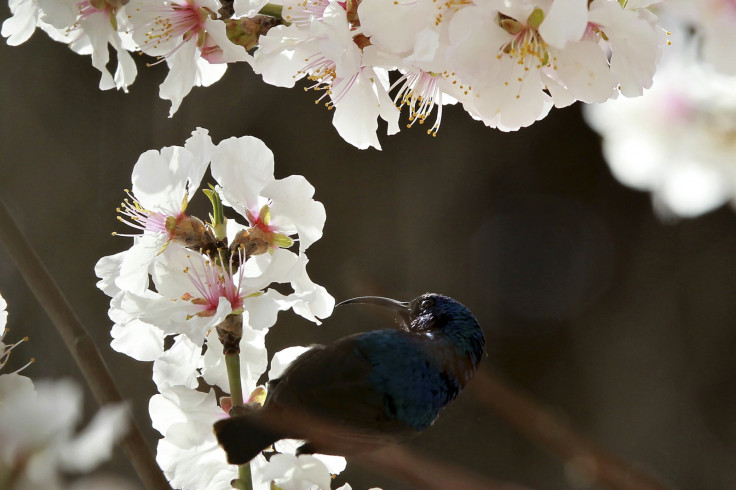Crucial bird and mammal pollinators moving to extinction: IUCN

More and more pollinating bird and mammal species are moving towards extinction, raising concerns over the billion dollar eco-services they provide, says a new IUCN study.
On average, 2.4 bird and mammal pollinator species per year have moved on the IUCN Red List category towards extinction in recent decades.
Habitat loss from agriculture was the main cause of decline for most of the species among both mammals and birds.
Some mammals, like the large-bodied fruit bats, are also severely impacted by hunting for bushmeat, while birds are affected by the impact of invasive species, said the study.
Approximately 90% of flowering plants are pollinated by birds and mammals.
"Our study is the first global assessment of trends in pollinators," lead author Eugenie Regan of UNEP's World Conservation Monitoring Centre said in a media statement. "It shows a worrying trend that may be impacting negatively on global pollination services, estimated to be worth more than US$215 billion."
As much as 9% of all currently recognised bird and mammal species are known or inferred to be pollinators.
Among mammals, bats are the principal pollinators, responsible for pollinating a large number of economically and ecologically important plants such as agave and cacti.
Hummingbirds and honeyeaters
Key pollinating birds include hummingbirds, honeyeaters, sunbirds and white-eyes.
Humans rely heavily on many of these plant species for food, livestock forage, medicine, materials and other purposes.
During the period 1988 to 2012, 18 pollinator bird species qualified for being "up-listed" to a higher threat category while none qualified for a down-listing.
The Regent Honeyeater (Xanthomyza phrygia) was up-listed from Endangered to Critically Endangered due to rapid population decline driven by drought, habitat loss caused by historic clearance for agriculture, and possibly competition with other species.
Between 1996 and 2008, 13 mammal species identified as pollinators were up-listed to a higher threat category and two species qualified for down-listing to a lower category of threat.
The Pemba Flying Fox (Pteropus voeltzkowi) moved from Critically Endangered to Vulnerable thanks to community conservation programmes which provide protection at specific roost sites.
The Choco Broad-nosed Bat (Platyrrhinus chocoensis) moved from Vulnerable to Endangered due to habitat conversion to agriculture for cocoa, while among non-flying mammals the Sunda Slow Loris (Nycticebus coucang) moved from Near Threatened to Vulnerable due to harvesting for the pet trade and habitat loss.
Red List Index
To determine the trend in the global status of pollinating birds and mammals, the authors used the Red List Index (RLI) – an established method that shows trends in survival probability over time using data from The IUCN Red List.
The RLI is based on the proportion of species that move through the IUCN Red List categories over time, either away from or towards extinction.
The approach now needs to be expanded to include taxonomic groups that contribute more significantly than vertebrates to pollination, such as bees and wasps (Hymenoptera) and butterflies (Lepidoptera), according to the authors.
The study, Global Trends in the Status of Bird and Mammal Pollinators, was produced in collaboration by the United Nations Environment Programme World Conservation Monitoring Centre (UNEP-WCMC), the International Union for Conservation of Nature (IUCN), Sapienza University of Rome and BirdLife International.
It is published online in the journal Conservation Letters.
The paper is freely available here.
© Copyright IBTimes 2025. All rights reserved.





















